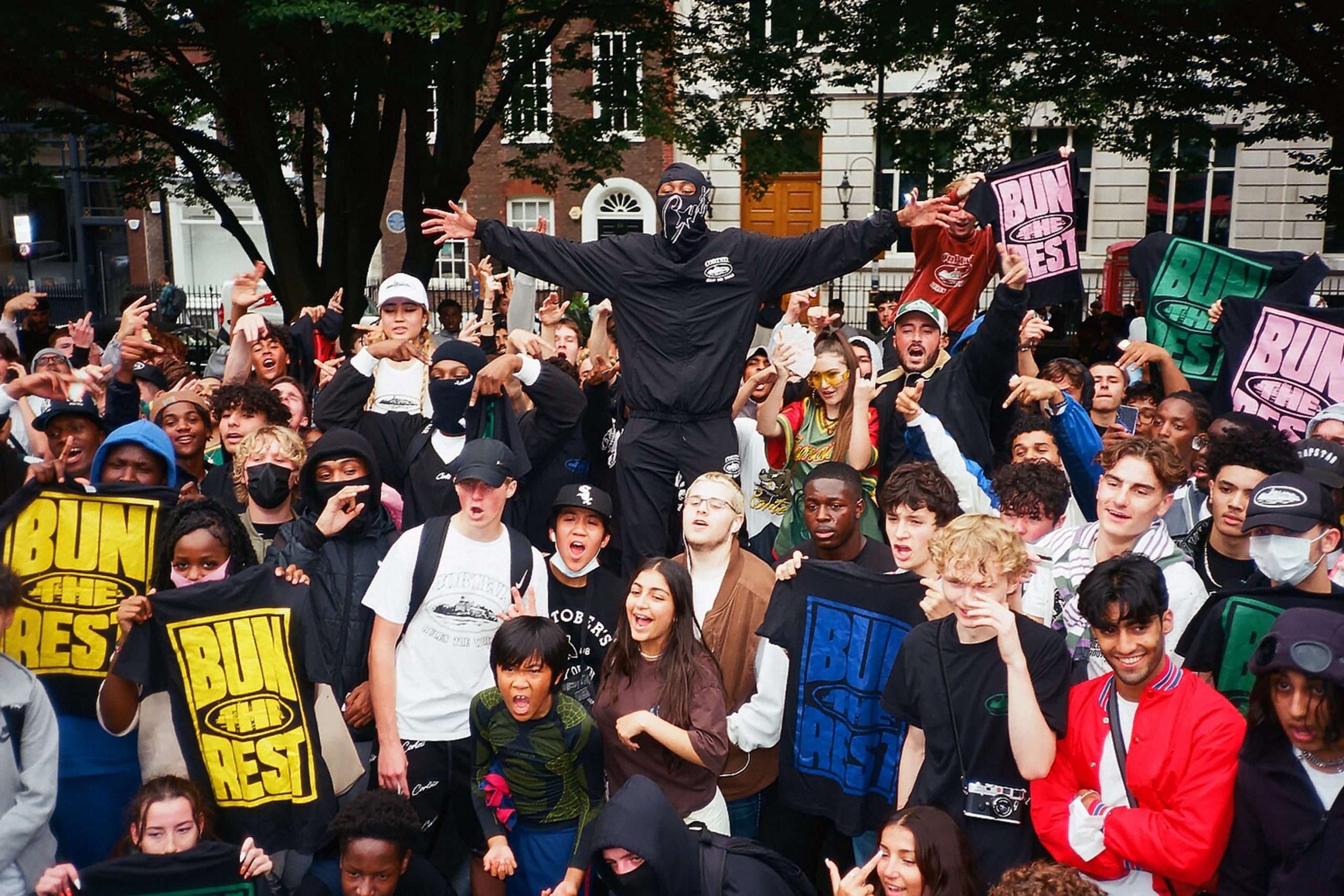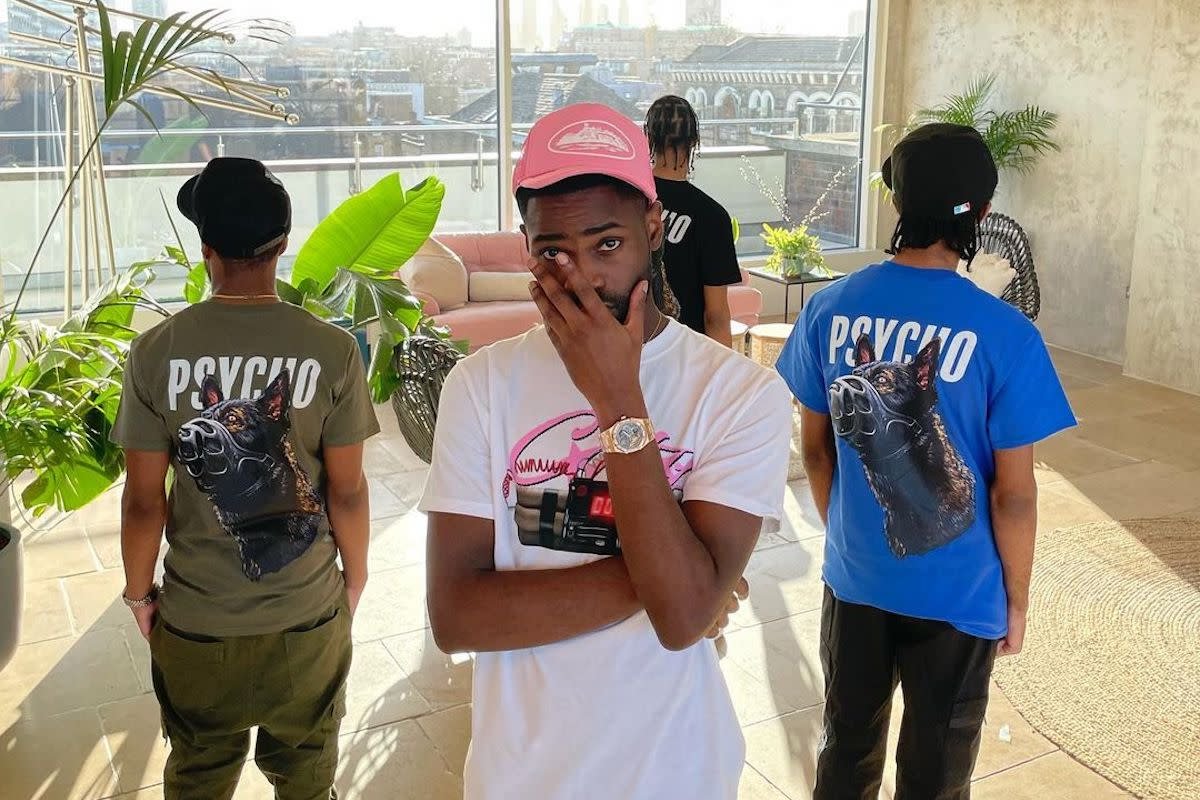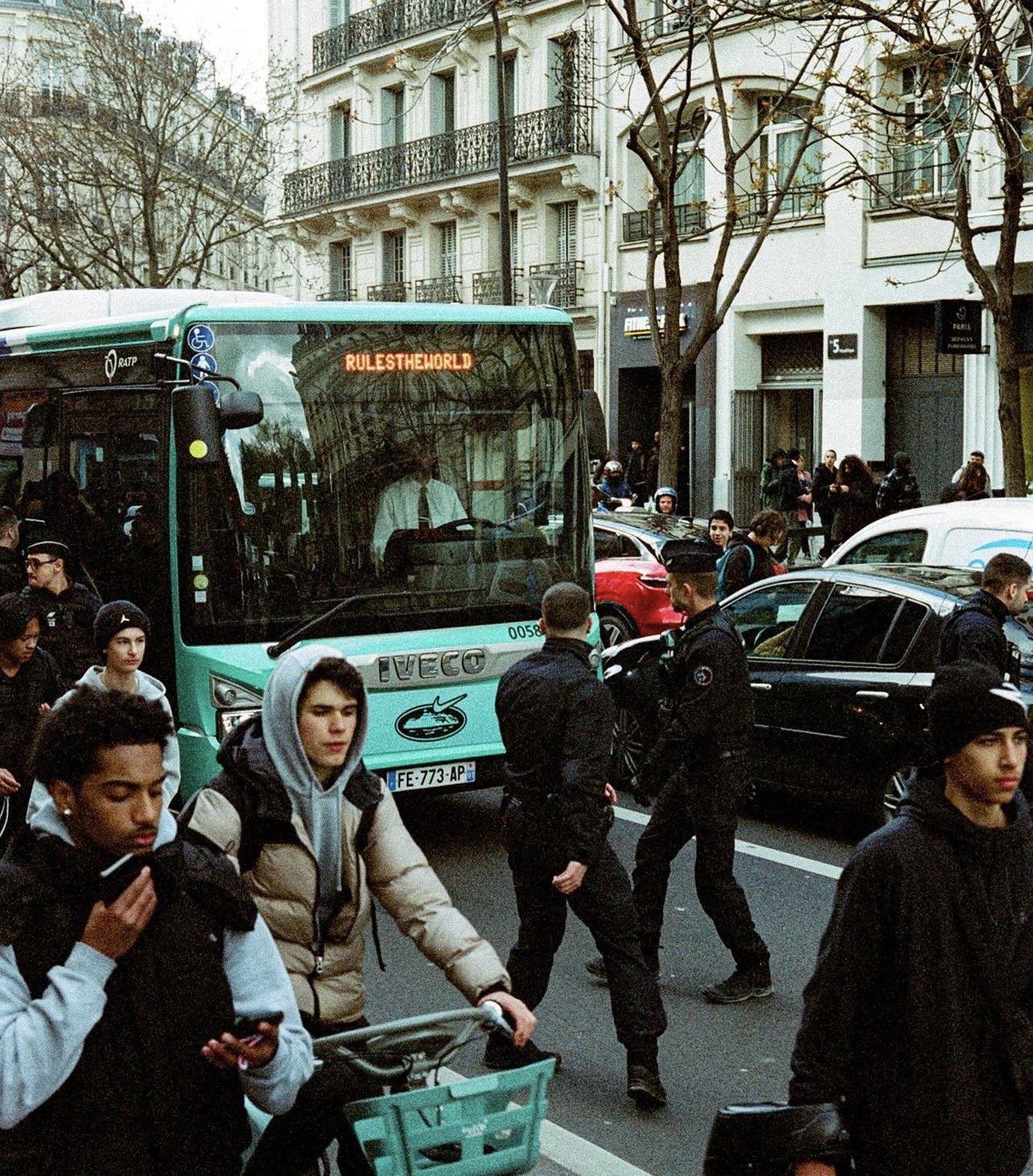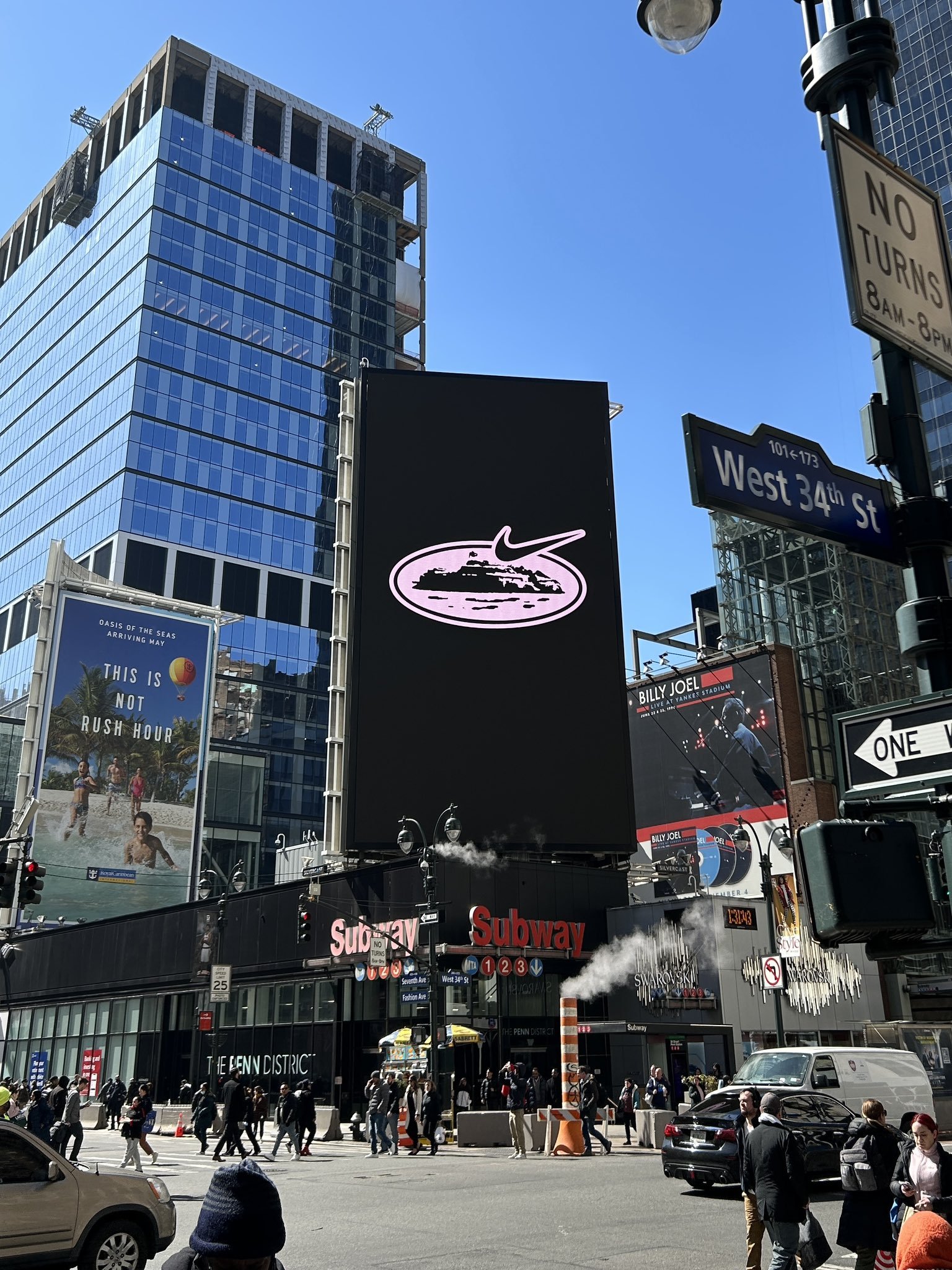CORTEIZ RULES THE WORLD





By Benedict Kiros
No, this isn't video from the latest found footage apocalypse movie. This is from Corteiz’s (or CRTZ in short form) recent drop of the lovingly labelled 'Pink Tings' Air Max 95 colourway in New York. It's one of the three colourways that make up the brand’s collaboration with Nike, which has solidified its seat on the current cultural hype throne. As you can tell, just as their brand slogan proclaims, Corteiz really is 'ruling the world'. Frenzies of this magnitude haven't been seen since the height of the Supreme drops in the 2010s. In this blogpost I will explore how CRTZ is doing this, how they keep it up and what others can learn.
The London-based streetwear brand, with their iconic Alcatraz logo that represents their anti-conformity ideology, was founded in 2017 by Clint, as he is simply known. Similar to its founder, the brand lives off a kind of mystique and exclusivity that is central to its appeal. Much along the lines of 'If you know, you know'. Corteiz does not seem to care much about gaining broad appeal, which ironically seems to be a feasible strategy to achieve exactly that. The brand has yet to partner with a large PR or Marketing agency.
The brand’s Instagram account is set to private, creating the feeling that as a follower you are part of an exclusive club (a club that now has almost 700k members). To be able to access the brand’s drops you have to be active on Twitter to get a password to enter the website. Moreover, Clint (the brand’s founder) never gives interviews, giving his venture the feeling of a secretive underground movement that only those lucky to be in the know get to be a part of.
This brand play isn't necessarily new. The likes of Supreme and Palace have long ago figured out how scarcity and exclusivity can lead to 'hype'. CRTZ is the latest brand to have been able to pull this off masterfully. But how can you create this kind of authentic enthusiasm and love for a brand? It is not enough for your stuff to just look great (which CRTZ clothes do).
To answer this, it is helpful to take a brand like Supreme as an example. The original hype brand, Supreme has lost some steam in recent years. Whilst still quite successful, no one is lining up for a Supreme drop anymore and the 'cool' people in the culture aren't wearing it anymore. According to GWI, 16–20-year-olds in the UK overindex most in their want for brands to be young, trendy, bold and exclusive. As Supreme matured, got huge due to acquisitions and collaborated with a wider range of mainstream brands, it lost its locality. Supreme feels like a behemoth now, not like the brand some cool skater guys made for their friends.
That is always the danger with brands like CRTZ and with larger, established brands that try to be like CRTZ. The bigger the club becomes, the less cool it is and the more it loses touch with its roots. Putting your community first therefore always needs to be the priority. If the cool people in the culture/community think you’re cool everyone else will also feel that way. For bigger brands this means putting ‘your’ people first. Never lose touch with your core audience and make sure that they feel your product ‘understands’ them. This needs to go beyond a few marketing activations and stunts. Trust and respect must be earned.
The goal is thus to authentically place your brand as part of the community that you are targeting. In CRTZ’s case, as a part of London fashion and streetwear culture. The brand is not pretending to be like you to get you to buy its stuff. It's black-owned, not part of a larger conglomerate, and hailing from a bedroom in West London. As a consumer this feels authentic, real and appealing. Clothes for the community by the community.
Founder Clint with all the Jackets gathered during the great BOLO exchange.
This theme also runs through the brand’s brilliant marketing campaigns that, over and over again, create those viral moments that get past our collective ad-blockers. To promote their new BOLO puffer jacket, CRTZ dropped a London location (a car park near West London’s White City) on Instagram, for people to trade-in jackets from established brands to get their hands on one of 50 Bolo jackets. Videos and pictures of masses of teenagers trying to exchange their jackets sent social media into a frenzy. Black-owned brands such as Trapstar were excluded from the exchange and the exchanged jackets donated to a homeless shelter. All in all, a shining example of a community-based brand activation with a lot of reach.
NYPD arriving on the scene of the New York Air Max launch.
The pink colourway of the Air Max 95 was launched in New York and marked the first time the brand really flexed its muscles outside the UK. CRTZ essentially shut down downtown Manhattan by instructing consumers to pull up at a downtown billboard to find the coordinates of the bodega it took over to host the release of the Corteiz x Nike Air Max 95 “Pink Beam”. Combining a scavenger hunt based activation that fed off the brand’s hype with the sense of community that a bodega represents is brilliant. Even when venturing outside of its natural London habitat the brand sticks to what makes it strong: community and viral moments. What is a better representation of that, than hundreds of teenagers running over each other to get to your neighbourhood bodega?
CRTZ is thus a perfect example of the ‘local hero’ challenger brand archetype. The brand fundamentally represents the prevailing feeling that, especially of the younger generation, big corporations have lost touch with the ‘people’. Specifically, in the world of fashion where brands grow, mature and lose their locality, CRTZ represents the antithesis to this. As I have outlined before, CRTZ doesn’t claim to a part of the community, it IS a part of the community.
The brand activations also encapsulate those messages perfectly. The campaigns are usually guerrilla-style, rogue and have the community of CRTZ-lovers at their heart. You will never see the brand taking out massive billboards, TV ads or paying athletes to wear their stuff. If you rock with it, cool. If you don’t, that’s cool too. The lessons are hereby simple: be genuine, don’t try to be something you are not and never forget where you came from.


